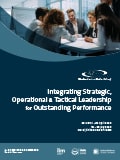An intensive professional development training course on
Risk-Based Inspection in Maintenance
Why Choose this Training Course?
The Course
The cornerstone of plant integrity is ensuring that facilities are correctly designed, and operated and maintained within the equipment design envelopes. The profitability of the facilities is significantly impacted by the cost-effectiveness of inspection and maintenance strategies and programs in place. Plant equipment is subjected to deterioration mechanisms and potential damage throughout their service life. To know with confidence the current condition of plant equipment, we need to inspect the equipment. Moreover, to determine the next inspection date, we need to understand the deterioration mechanisms to which the equipment will be exposed and their effects. This entails identifying the deterioration mechanisms; determining their rates; acceptability criteria; and the extent, frequency, and methods for inspecting this equipment.
Traditionally, prescriptive inspection practices were developed based on experience and in some cases in response to significant failure cases. In general, they did not take full account of failure risks nor of the degradation mechanisms that the equipment is exposed to in operation. As a result, some companies would not do enough inspection and precipitate avoidable failures, while others would unnecessarily overspend, resulting in significant waste of resource.
Risk Based methodologies enable the assessment of the likelihood and potential consequences of equipment failures. RBI & RCM provide companies the opportunity to prioritize their equipment for inspection; optimize inspection methods, frequencies and resources and develop specific equipment inspection plans. This results in improved safety, lower failure risk, fewer forced shutdowns, and reduced operational costs.
The risk-based approach requires a systematic, and integrated use of expertise from the different disciplines that impact plant integrity. These include design, materials selection, operating parameters and scenarios, and understanding of the current and future degradation mechanisms and of the risks involved.
The Goals
- To provide clear understanding of the key aspects of Risk Based Inspection, its advantages and limitations, and how it is linked to Reliability Centered Maintenance and to fitness-for-service assessment.
- To show you how to develop a successful Risk Based program at your facility, and to provide you with the practical and effective methods you need to perform practical likelihood and consequence analysis.
- Show you how to develop optimum Inspection intervals for individual equipment based on the assessment of the active degradation mechanisms.
The Delegates
- Operations, maintenance and engineering professionals and supervisors,
- Engineers and other technical staff with responsibilities for inspection, maintenance, assessment and mitigation of plant equipment degradation
- Those who want to use Risk Techniques effectively in their plants.
The Process
The course combines presentation of the key principles, methods, and best practices backed up with case studies and Question & Answer workshops to maximize the benefits to the participants. The comprehensive course notes and presentation material will provide valuable reference
The Benefits
Delegates will acquire the knowledge and skills necessary to apply the risk-based methodology effectively in their work thereby enhancing their competence and performance level and making additional value added contributions to their organizations.
The Results
Identification and assessment of active degradation mechanisms coupled with implementation of a Risk Based program would result in significant measurable improvements including: improved plant integrity with fewer failures, optimization of inspection and maintenance plans and resources, and reduction in operating costs.
The Course Content
Day One
- Course Objectives and Overview
- Significance of Inspection in Plant Integrity and Maintenance Costs
- The real function of inspection
- Inspection Key Performance Indicators
- Common Inspection Strategies and Their Limitations
- Risk-Based Decision-Making Fundamentals and Tools
- Risk Assessment - Probability of failure, consequences of failure
- Risk Management – Avoidance, mitigation
- Risk Communication.
- Understanding and Managing Risk
- Principles Risk Assessment
- Risk Assessment Elements
- Qualitative, semi-quantitative, and quantitative assessment
Day Two
- Risk Based Inspection (RBI)
- Definitions
- Evolution
- Key Elements of RBI
- Reasons for implementing RBI
- Benefits and Limitations of using RBI
- RBI as a part of plant integrity management
- Economic benefits
- API Risk-Based Inspection Methodology
- API RP 580
- API BRD 581 – Various levels of RBI Analyses
- Impact of RBI on Related API Codes, Standards, and Recommended Practices
- API 510, 570 and 650
- API 579 Fitness-For-Purpose
- API Risk Based Inspection Software
Day Three
- Overview of API 571 - Recognition of Conditions Causing Deterioration of Failure
- Overview of over 60 damage mechanisms found in refineries
- Detailed discussion of some common damage mechanisms: Internal and external corrosion, brittle fracture, fatigue, SCC, HIC, internal and external corrosion
- Identification of Deterioration Mechanisms & Failure Modes
- Active damage mechanisms in critical plant equipment
- Inactive or “unlikely” mechanisms
- Identification for assessment, including
- Impact of simultaneous mechanisms
- Selection of Suitable Materials for Specific Deterioration Mechanisms
- Integrated Asset Management
- Linking Risk Assessment, RBI, and RCM
- Managing Risk Using RBI
Day Four
- Reliability Centred Maintenance (RCM)
- Definitions
- Evolution
- Key Elements of RCM
- Reasons for implementing RCM
- Benefits and Limitations of using RCM
- RCM as a part of plant integrity management
- Economic benefits
- Development of Inspection Plan (Based on Risk Ranking)
- Inspection planning guidance
- Need for some speculative/exploratory inspection
- Implementation
- Essentials for Establishing a Successful Risk Based Program
- The Team - Recommended Structure and Mandate
- Inspection History, Interpretation
- Equipment Criticality Rating
- Equipment Data Base
- Shared data base by RBI and RCM
- Importance of Data Quality
- Computerized Maintenance Management Systems
Day Five
- Inspection Interval Optimization Based on Assessed Risk
- Evaluation of Inspection Results
- Data Quality
- Corrosion Rate calculations
- Remaining Life Calculations
- Fitness-For-Service Assessments
Estimation of Consequences of Failures
The Certificate
- AZTech Certificate of Completion for delegates who attend and complete the course.
DO YOU WANT TOLEARN MORE ABOUT THIS COURSE?
© 2024. Material published by AZTech shown here is copyrighted. All rights reserved. Any unauthorized copying, distribution, use, dissemination, downloading, storing (in any medium), transmission, reproduction or reliance in whole or any part of this course outline is prohibited and will constitute an infringement of copyright.







